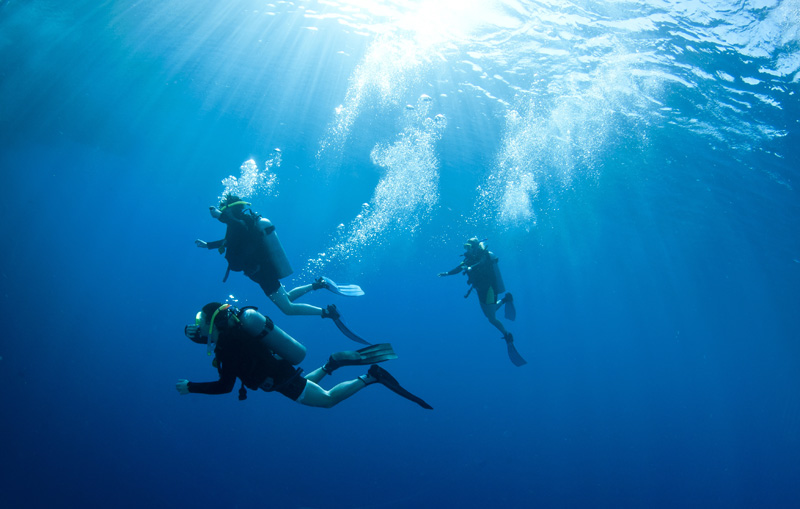If you don’t know your buddy, you know the most.
I learned to live by this rule and have been reminded on more than one occasion. I love my wife and we have traveled together to a number of awesome places with great diving, but she does not dive. As a result I am often the guy who pairs up with the additional odd member of the excursion. Many times this works out very well and I have made some great friends over the years. When I first moved to California and had the chance to dive locally here in San Diego, I was instantly exposed to perils of random pairing and total appreciation for everything my PADI and NAUI instructors taught me. More than anything, it taught me to believe in myself and never accept that the other diver, no matter how many years or dives to their credit, knows more than you.
I moved from Cleveland, Ohio to San Diego in 1998. I had completed my advanced NAUI training in the Caribbean and after a year in San Diego I decided to see what California diving was all about. In May of 1999, I got on board a popular dive charter boat and took a two tank trip. I was prepared for the colder water, but I was not yet aware that California diving was different in other more important ways.
The first indication of non-guided diving became apparent to me during the pre-dive briefing on board, above the Point Loma Sea Cliffs site. All of my previous experience had been in guided situations around the Caribbean and Florida, but now here in California things were different. “No problem,” I thought. The guy I buddied up with had lots of experience. He was outfitted with Nitrox and had planned to bring a spear gun with him to collect a couple of in-season denizens from the site. He must really know his stuff, and for me making my first California boat dive I couldn’t have been in any better hands. I was ready to go.
The conditions were so-so. It was a nice day, but there was a good chop and several of the divers had parted with their last meal before leaping over the side. My Ohio side was showing when I too dedicated my last meal to the kelp bed critters, thinking that the chum might help bring out a bigger variety of marine life. My buddy and I hit the water and I began to descend. He didn’t. At 15 feet I noticed that he was still above me and was having trouble releasing his now over-inflated BC. I swam up and tugged on one of his fins, offering to assist. He signaled “OK” and I pulled on his fin to bring him down. It was a struggle, but we made it.
At 77 feet, the five foot visibility did nothing to improve my spirits, but I wanted to make sure I got through this initial dive. Well, no sooner than we hit the bottom and checked our gauges, my buddy armed with a spear gun took aim and shot at the first thing that moved. Fortunately, it was not another diver, and most importantly, not me! The Sheephead in question had nothing to fear, as the spear dropped harmlessly to the bottom while my buddy rapidly ascended to the surface.
Not thrilled with this outcome, I was also not keen on the idea of continuing the dive alone. I was duty bound, and I realized that the entire meaning of “plan your dive and dive your plan” had not been an integral part of this adventure since we hit the water, and probably the case before we left the dock. So I made a slow ascent and found him with his BC inflated at the surface. He was babbling incoherently, and there was a trickle of blood coming from his nose. I worked with him to return to the boat and got him safely on board. I was asked if I wanted to continue the dive, and decided that the experience was more valuable than anything I would get from the next 20 minutes in the water, so I climbed aboard and waited out the surface interval to dive again later.
My buddy turned out to be fine. He was a bit too eager to try out his new toys and ultimately admitted that both the Nitrox gear and speargun were making their inaugural dive that day. And while I had made a shore dive in La Jolla Cove four years earlier I was willing to tell anyone who would listen that this was my first California boat dive.
As I look back in my log book notes the entry simply says “Buddy – difficulty, speargun/ problems with buoyancy”, but what I learned in that 16 minute dive was that I wasn’t a novice and my skill, experience and ability to react are important no matter what I thought coming into the situation. You always have to be ready and remember the meaning of “Don’t Panic”. There is no room to assume. Be a good buddy and don’t be afraid to expose your limits, because it is always about you and someone else.
Story by Ted Molter


